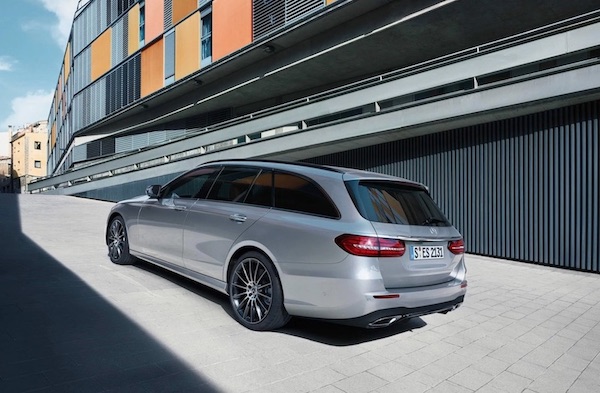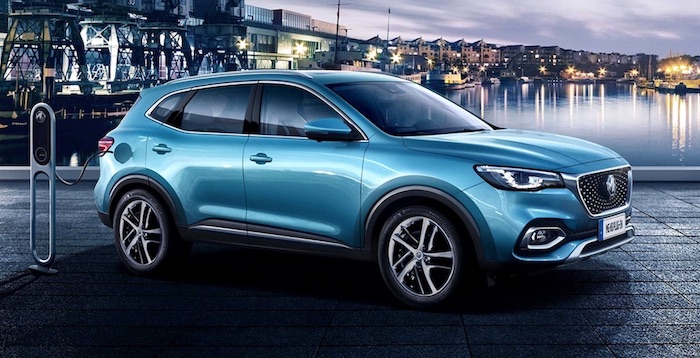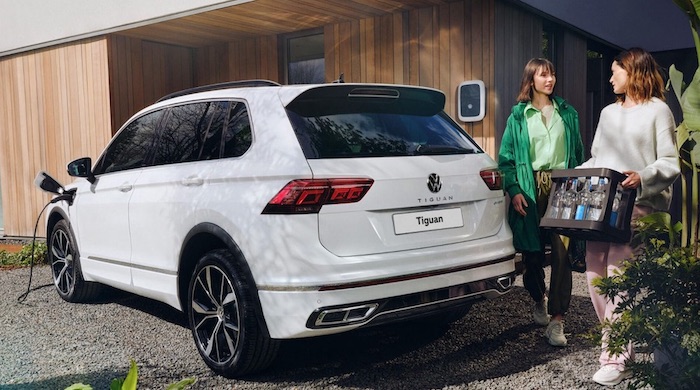Overview
Mercedes-Benz, simply known as Mercedes, is a leading global luxury automative manufacturer based in Germany. The company is headquartered in Stuttgart and is famed for its high quality passenger vehicles, to include the Mercedes-Maybach. However, the company is also a leader in manufacturing commercial vehicles, to include the plug-in Mercedes eSprinter commercial EV and the plug-in Mercedes eVito electric van.
Mercedes-Benz EQ is the sub-brand used by the company for its portfolio of battery-electric vehicles (BEVs), plug-in hybrid electric vehicles (PHEVs) and mild hybrids. The pure electric cars are branded as EQ, while the PHEVs are branded as EQ Power. The mild hybrid vehicles are branded as EQ Boost. The PHEV portfolio includes:
- Mercedes A-Class Hatchback PHEV
- Mercedes A-Class Saloon PHEV
- Mercedes B-Class Hatchback PHEV
- Mercedes C-Class Saloon PHEV
- Mercedes C-Class Estate PHEV
- Mercedes E-Class Saloon PHEV
- Mercedes E-Class Estate PHEV
- Mercedes S-Class Saloon PHEV
- Mercedes CLA Coupé PHEV
- Mercedes CLA Shooting Brake PHEV
- Mercedes GLA SUV PHEV
- Mercedes GLC SUV PHEV
- Mercedes GLC Coupé PHEV
- Mercedes GLE SUV PHEV
- Mercedes GLE Coupé PHEV
Electric Cars: The Basics
For those of you new to zero-emission electric driving, we recommend a read of the following articles:
Sign up to the e-zoomed Electric Living newsletter
The Mercedes-Benz E 300 de Estate PHEV
The Mercedes-Benz E Class premium car is currently in its fifth generation. It was first introduced in 2016. The E Class includes both a saloon and estate body type. The E class also includes an estate plug-in hybrid electric vehicle (PHEV) variant.
The Mercedes E300 de Estate is one of the very few upmarket plug-in hybrid electric estate cars available in the UK market. The electric vehicle (EV) pairs 2.0-litre (4 cylinder) diesel engine with an electric motor (90 kW), to deliver a combined system output up to 306 HP (700 Nm torque). The EV can achieve 0-62 mph in 6.0 seconds and has a 146 mph top speed (in electric mode, the top speed is over 80 mph).
The PHEV has a 13.5 kWh onboard EV battery, with a respectable zero-tailpipe emission range up to 32 miles (WLTP certified). Of course, the real-world range will depend on a number of factors (driving profile, weather, road condition etc), and could be much lower than the manufacturer claimed range. Expect the real-world emission-free EV range to be closer to 27 miles.
In any case, for shorter distances, driving in cities and towns, the 32 mile electric range is sufficient. Do keep in mind that driving the PHEV on the electric mode will result in zero-tailpipe emissions and cost savings (depending on where and when the EV is charged, the cost per mile on electric mode is between 5 pence and 10 pence i.e. far cheaper than using the internal combustion engine (ICE).
The EV has a 7.4 kW onboard charger and can be charged 10% to 100% via a dedicated residential EV charger like Easee One in 90 minutes. Though the PHEV can also be charged using a conventional 3-PIN domestic plug (10% – 100%: 5 hrs), we at e-zoomed discourage the use domestic plugs for charging electric cars. Despite the price tag, the electric car is not compatible for rapid DC charging.
Moreover, using the electric mode, also improves the overall efficiency of the vehicle. Mercedes claims a fuel economy up to 201.8 mpg for the estate PHEV. Of course, the real-world fuel economy will be lower, but far improved compared to the fuel economy of the petrol variant (51.4 mpg).
As can be expected from Mercedes, the E 300 PHEV has a luxurious interior and technology-laden, to include: Mercedes-Benz User Experience (MBUX) – controlled via voice or touch input, the innovative infotainment system can over time even predict personal habits thanks to artificial intelligence.
Other standard specifications include, active brake assist, blind spot assist, wireless charging, ambient lighting (staged – 64 colours), KEYLESS-GO starting function and high-resolution multimedia colour display.
The PHEV is practical for families and can comfortably seat adults in the rear seats (ample legroom and headroom). The boot space for the EV is smaller than the conventional internal combustion engine (ICE) variant, due to the EV battery. Nevertheless, the 480 litres available is practical.
The EV is also well suited as a company car. Company-car drivers can take advantage of the lower Benefit-in-Kind (BiK-12%) tax rate, given the lower tailpipe emissions of the PHEV (36g CO2/km). The plug-in hybrid electric vehicle does not qualify for the UK government plug-in car grant.
Bottom-line, electric driving is good for the environment and the wallet.
| PROS | CONS |
|---|---|
| Spacious and practical (good boot size: 480 L) | Only available as a diesel plug-in hybrid |
| High quality interior and standard equipment | Limited electric range (32 miles) given the price tag |
| Comfortable to drive | Not compatible for DC charging |
The Mercedes-Benz E 300 de Estate PHEV (credit: Mercedes)
| At A Glance | |
|---|---|
| EV Type: | Plug-In Hybrid Electric Vehicle (PHEV) |
| Body Type: | Estate |
| Plug-In Car Grant (PiCG): | Not Available |
| Engine: | Diesel-Electric |
| Available In UK: | Yes |
| Variants (4 Options) |
|---|
| Mercedes-Benz E 300 de AMG Line Edition (from £52,070) |
| Mercedes-Benz E 300 de AMG Line (from £56,380) |
| Mercedes-Benz E 300 de AMG Line Premium (from £58,380) |
| Mercedes-Benz E 300 de AMG Line Night Edition Premium Plus (from £60,880) |
| EV Battery & Emissions | |
|---|---|
| EV Battery Type: | Lithium-ion |
| EV Battery Capacity: | Available in one battery size: 13.5 kWh |
| Charging: | On-board charger 7.4 kW AC (10%-100%: 90 mins). DC charging not available |
| Charge Port: | Type 2 |
| EV Cable Type: | Type 2 |
| Tailpipe Emissions: | 36g (CO2/km) |
| EV Battery Warranty: | 6 years or 62,000 miles |
| Average Cost Of Residential Charging | |
|---|---|
| Battery net capacity : 8.8 kWh | £1.27 |
| Battery net capacity : 11.6 kWh | £1.67 |
| Battery net capacity : 12.0 kWh | £1.73 |
| Battery net capacity : 13.10 kWh | £1.89 |
| Battery net capacity : 14.10 kWh | £2.03 |
- Note 1: The average cost of residential electricity in the UK varies depending on the region, supplier and type of energy used. An average for the UK is 14.40 p/kWh.
- Note 2: Not all EV manufactures make available the data on net EV battery capacity, and in a number of instances the EV battery capacity advertised, does not state if it is gross or net capacity. In general, usable EV battery capacity is between 85% to 95% of the gross available capacity.
| Charging Times (Overview) | |
|---|---|
| Slow charging AC (3 kW – 3.6 kW): | 6 – 12 hours (dependent on size of EV battery & SOC) |
| Fast charging AC (7 kW – 22 kW): | 3 – 8 hours (dependent on size of EV battery & SoC) |
| Rapid charging AC (43 kW): | 0-80%: 20 mins to 60 mins (dependent on size of EV battery & SoC) |
- Note 1: SoC: state of charge
| Dimensions | |
|---|---|
| Height (mm): | 1476 |
| Width (mm): | 2065 |
| Length (mm): | 4945 |
| Wheelbase (mm): | 2939 |
| Turning Circle (m): | 11.6 |
| Boot capacity (L): | 480 |
| E 300 de AMG Line Edition | |
|---|---|
| EV Battery Capacity: | 13.5 kWh |
| Pure Electric Range (WLTP): | 32 miles |
| Electric Energy Consumption (kWh/100km): | 16.5 |
| Fuel Consumption (MPG): | 176.6 – 201.8 |
| Charging: | On-board charger 7.4 kW AC (10%-100%: 90 mins). DC charging not available |
| Top Speed: | 146 mph (electric mode: 80 mph) |
| 0-62 mph: | 6.0 seconds |
| Drive: | Rear-wheel drive (RWD) |
| Electric Motor (kW): | 90 |
| Max Power (hp): | 306 (system output) |
| Torque (Nm): | 700 (system output) |
| Transmission: | Automatic |
| Seats: | 5 |
| Doors: | 5 |
| Kerb Weight (kg): | 2,145 |
| Colours: | 10 |
| NCAP Safety Rating: | Five-Star |
While e-zoomed uses reasonable efforts to provide accurate and up-to-date information, some of the information provided is gathered from third parties and has not been independently verified by e-zoomed. While the information from the third party sources is believed to be reliable, no warranty, express or implied, is made by e-zoomed regarding the accuracy, adequacy, completeness, legality, reliability or usefulness of any information. This disclaimer applies to both isolated and aggregate uses of this information.









































